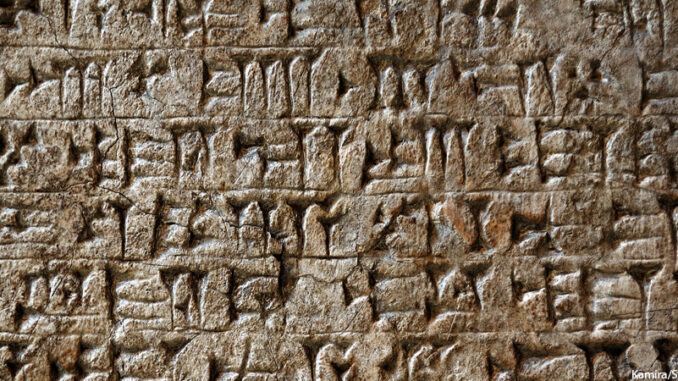
Trapped Canadian Coal Miners Climb to Safety
On September 26, 2021, 39 Canadian coal miners were trapped deep underground in a northern Ontario mine. The elevator system failed when a heavy scoop bucket crashed into it. The miners immediately sought shelter in “refuge stations” inside the mine. These stations provided a store of water and allowed communication with their families. Rescue teams were able to deliver food and medical supplies to them through the refuge stations as well. The following day, the miners began the long climb to the surface, which involved about 4,000 feet (0.6 miles) of vertical ladders. The miners wore harnesses for safety during the climb, which at its deepest point was equal to almost three times the height of the Empire State Building. The climb took about eight hours, but the miners paused every several hundred feet for breaks if needed. Those who were unable to make the climb were hauled out with ropes.
None of the miners were injured in the operation. They all received medical attention once they reached the surface, and they all appear to be in good health and good spirits despite their 48 hours underground. All in all, the rescue involved 58 first responders and took two and a half days to complete.
The Totten mine, which employs about two hundred people, will hold an investigation into the event, to understand what happened and work to prevent a reoccurrence.
Dig Deeper Use internet resources to learn more about the safety systems that mines use to keep their workers safe. Write a two-paragraph summary explaining what you learn.
Ancient Human Footprints Found in New Mexico
Scientists believe that the first humans arrived in North America by crossing a land bridge (called Beringia) between Asia and Alaska. Scientists believe that this event happened between 13,000 to 16,000 years ago. Now, thanks to a new discovery, they may be able to pin down a more accurate date that is much earlier than they originally thought.
In 2009, David Bustos, a resource program manager at White Sands National Park in New Mexico, found fossilized human footprints in the park’s wetlands. But at the time, there was no way to definitively determine their age. Since then, more footprints were found in a dry lake bed in the park. These had aquatic plant seeds stuck in them, which scientists were able to analyze using radiocarbon dating. The age of the prints are now estimated to be between 21,130 and 22,800 years old, though it’s possible that they could be even older than that. Scientists who examined the prints think they belong to people 9 to 14 years old.
Footprints are more fragile but also more accurate than other fossils or cultural artifacts. They are made of fine silt and clay, so scientists have to work quickly to take lots of photos and create 3D models of them. However, some scientists aren’t ready to start changing the history books just yet. They point out that no tools or other artifacts have been found in the area, so more research still needs to be done.
Dig Deeper Use Internet resources to describe what North America would have been like at the time that these human footprints were made. What was the climate like? What types of vegetation existed? Animals? Write a paragraph sharing what you learn.
Hobby Lobby Returns Stolen Artifacts
In 2019, the popular craft store Hobby Lobby was in the news for purchasing historical artifacts. The company’s owners purchased an ancient clay tablet, estimated to be 3,500 years old, from an antiques dealer. It is called the Gilgamesh Dream tablet because the tablet has Sumerian writing from the Epic of Gilgamesh which is the oldest known epic poem in human history. Some parts of the full Gilgamesh poem are also similar to portions of the Hebrew Bible. Hobby Lobby wished to display it in the Museum of the Bible in Washington, D.C., (which is also owned by the Hobby Lobby owners).
The company’s history with this artifact began in 1991. The Gulf War was occurring in Iraq. During that time, many Iraqi museums were looted. By 2001, the Gilgamesh Dream tablet made it all the way to London, where it was purchased by an antiques dealer, who then sold it to another antiques dealer in the United States. In 2014 Hobby Lobby purchased it for $1.67 million at the Christie’s auction house. But in 2019, it was seized by the U.S. government as stolen merchandise. Hobby Lobby sued Christie’s over the purchase, but ultimately, the company had to pay a $3 million settlement to the U.S. Department of Justice.
An estimated 17,000 looted Iraqi artifacts have wound up in the United States and are in the process of being returned. The Gilgamesh Dream tablet is now being returned to Iraq.
Dig Deeper The Gilgamesh Dream Tablet is etched with writing and includes a section of the poem “Gilgamesh.” What is this poem? Why is it historically important? Use Internet resources to learn more, and write a paragraph about what you find.
Tunisia’s Historic New Prime Minister
Najla Bouden Ramadhane is the new prime minister of Tunisia. This makes her the first female prime minister of Tunisia. And it also makes her the first female leader of an Arab country.
Before becoming prime minister, Ramadhane, was a professor of geosciences at the National Engineering School in Tunis. She was also the director general in charge of quality at the Ministry of Higher Education and Scientific Research. But she is a newcomer to politics and is not known to belong to any particular political party. She will now be in charge of immediately forming a new cabinet.
The way she has come to power has been rather rocky. Kais Saied, the president of Tunisia, fired former prime minister Hisham al-Mashishi and suspended the parliament for thirty days. Saied appointing himself attorney general. He justified these actions on the COVID-19 crisis, even as COVID cases continue to drop in Tunisia. Initially, about 90 percent of Tunisians backed Saied’s decision, even though his opponents called it a coup. Tunisian supporters viewed the previous government as ineffective. Then Saied began banning public gatherings and arresting some of his critics. Saied appointed Najla Bouden Ramadhane as prime minister on September 29, 2021.
Tunisia faces widespread poverty and unemployment. The country is facing its worst economic downturn since 1956. The inflation rate is currently 6.2 percent. More than a third of young people are unemployed, and the unemployment rate for the nation overall has risen to 18 percent during the coronavirus crisis.

